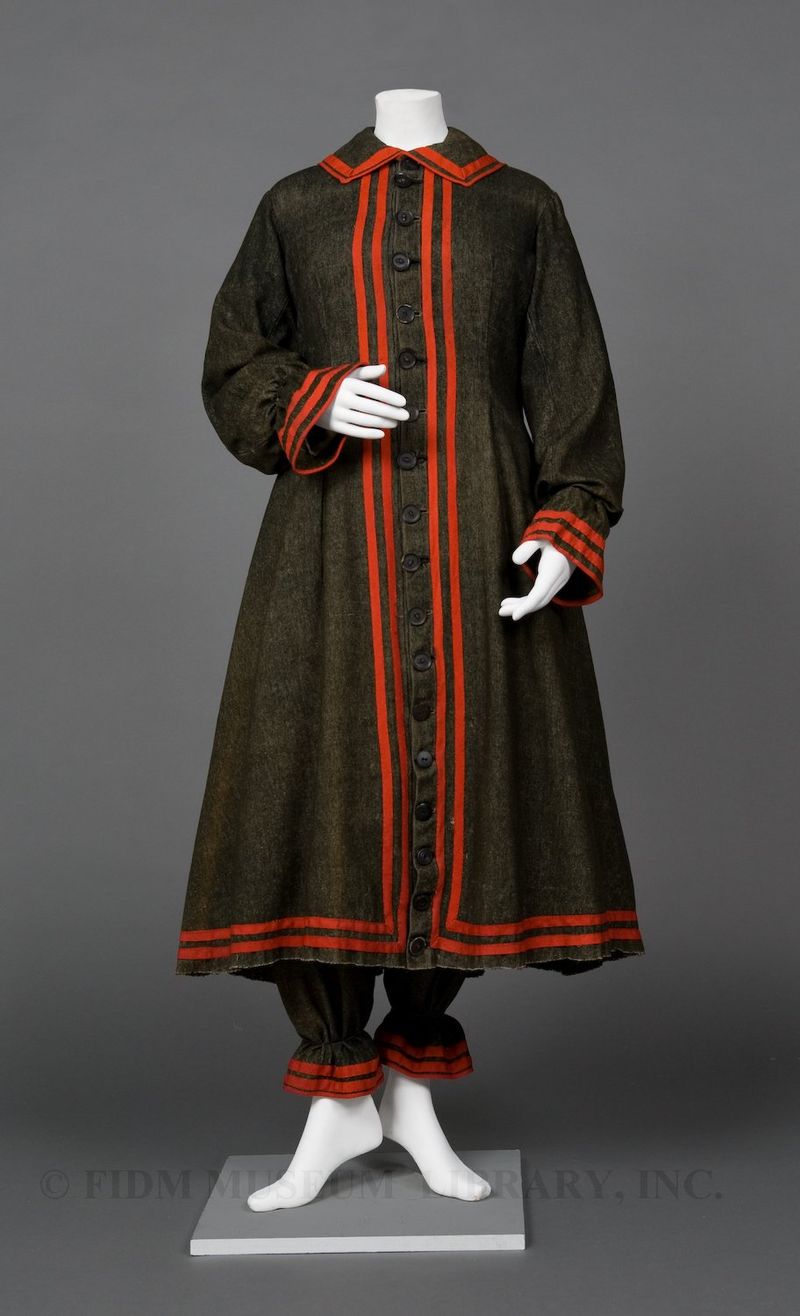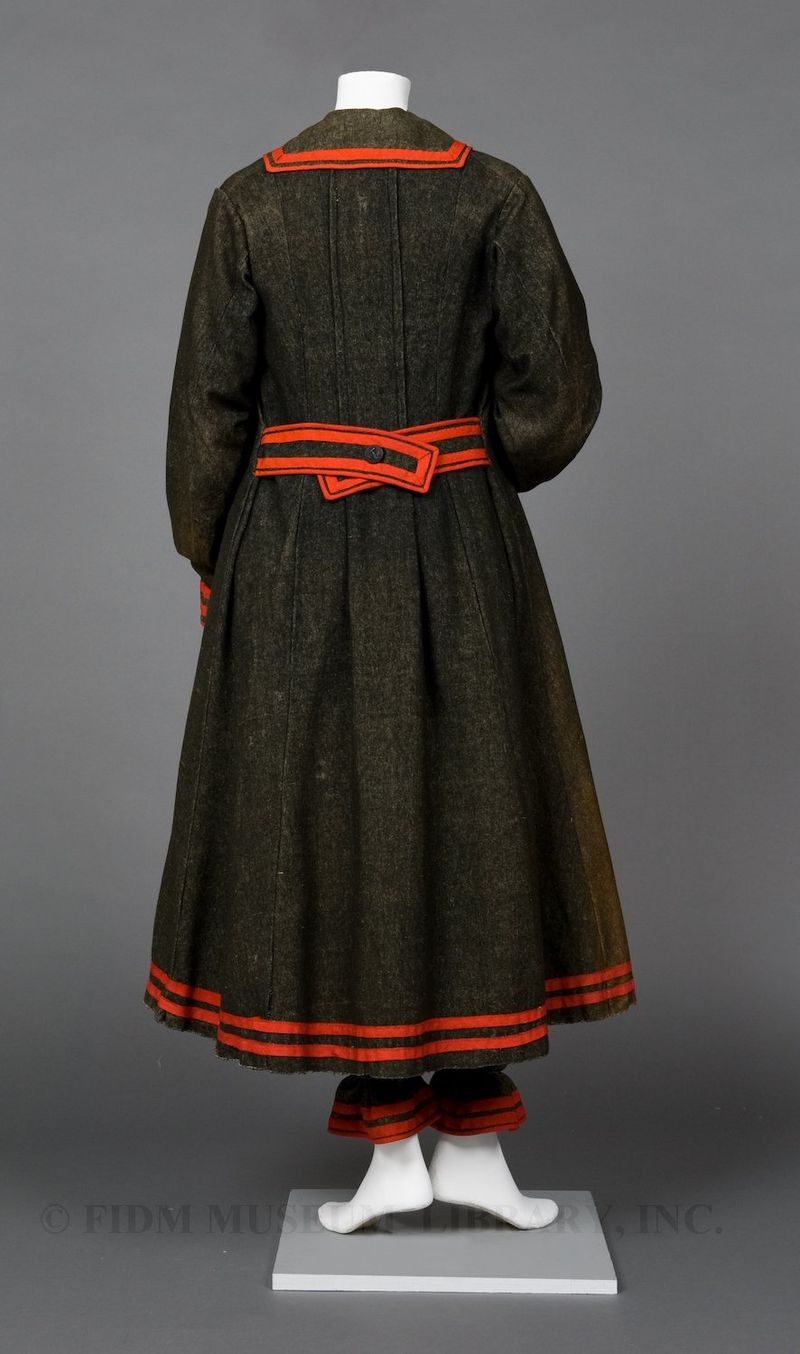As August turns to September, we’re all thinking about how to best enjoy the last days of summer. For many, this means getting in one last swim. Imagine what it would be like to paddle around in the water wearing the wool “swimsuit” below. Seems difficult, doesn’t it?
 Woman’s bathing ensemble
Woman’s bathing ensemble
c. 1875
Museum Purchase
2006.25.3AB
When looking at this bathing ensemble, it is important to remember that it wasn’t intended to be worn for vigorous lap swimming or surfing. In the nineteenth century, swimming or “taking the waters” meant simply submerging oneself in water, either at a medicinal hot spring or in the ocean. As swimming was conceptualized as a kind of medicine, bathing garments were considered functional rather than fashionable. Women’s swimwear was intended to keep the body warm in often cold waters, to protect against sunburn and to maintain modesty through full-body coverage. To complete the look, a nineteenth century swimmer would have also worn a head covering, stockings, flat soled beach shoes and possibly carried a parasol. Bathers interested in total privacy would have rented a bathing machine, a small, wheeled hut which was pulled into the water by horses and provided individual bathers with an extremely secluded bathing experience.
There were, of course, some who bathed for recreation rather than health. The mingling of men and women at seaside resorts was a somewhat thorny situation, resulting in much commentary. An August 10, 1887 New York Times article titled “Seaside Manners” questioned the relaxation of social norms which occurred at the beach, noting, “a custom has grown up of lolling about, chatting, and making a social hour of the bath, all in bathing costume, which seems undignified not to say immodest.” At some beaches, men and women bathed at different times, with men allowed to bathe in their “birthday suits” while women were always required to wear full dress.
The jaunty red trim which enlivens this otherwise plain ensemble is typical of early swimwear. Dark wool bathing costumes were often styled to resemble nautical uniforms, with red or white braided trim and sailor collars. Some early bathing costumes were made of silk, which tended to leach its dye onto the wearer when wet. Both wool and silk clung to the skin when wet, so many bathers had a coordinating cape or wrap which was worn over the wet bathing costume.
Stylistically, the most important element of this bathing costume is the pants, or bloomers. To contemporary eyes, these full bloomers seem commonplace, unrevealing and extremely cumbersome in the water. As noted in this post, however, pants-wearing women were an extreme novelty in the nineteenth and early twentieth century. The few women who did attempt to wear bloomers as everyday dress in the nineteenth century were ridiculed. It was only through their adoption for sporting and athletic activities that pants began to be acceptable and even fashionable everyday wear for women. This process was ongoing throughout the first few decades of the twentieth century.
Check back tomorrow to see how swimwear evolved throughout the twentieth century, including (of course!) more examples of swimwear from the FIDM Museum collection.
Martin, Richard and Harold Koda. Splash: A History of Swimwear. New York: Rizzoli. 1990.
Probert, Christina. Swimwear in Vogue Since 1910. New York: Abbeville Press.1981.




Very nice blog! I cant imagine men & women using this kind of swim wear nowadays. trends during nineteenth century is very conservative. but i agree that this kind of swim wear is very functional because it keeps the body warm in often cold waters, to protect against sunburn.